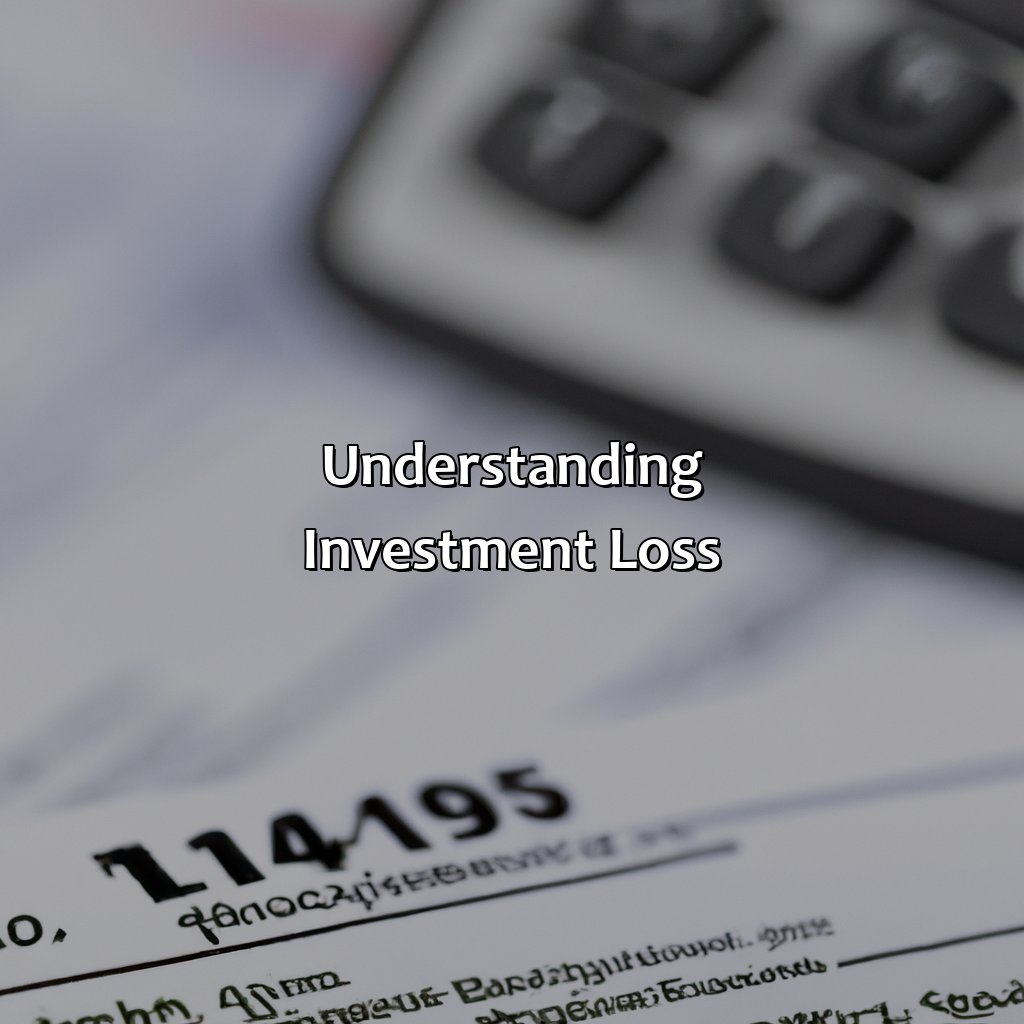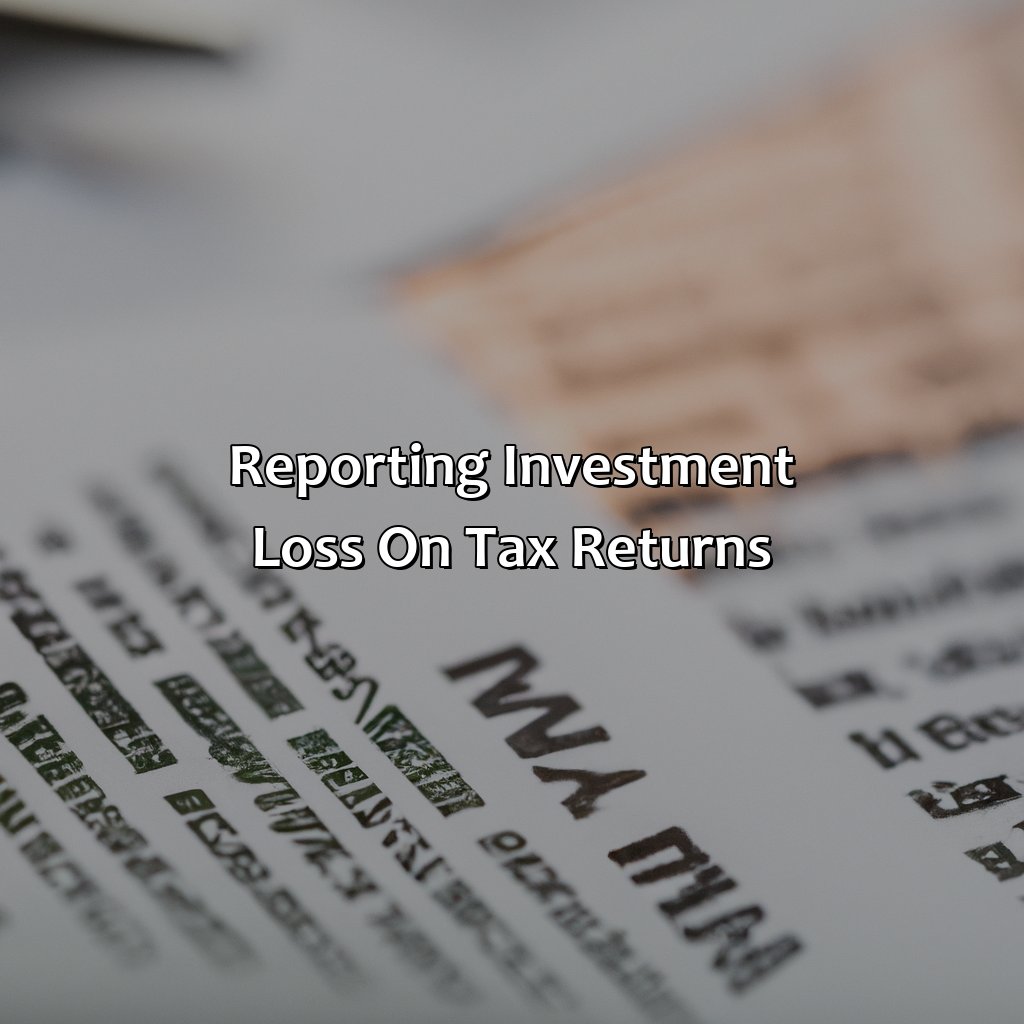How Does Investment Loss Affect Taxes?
Key Takeaway:
- Investment losses can have tax implications: If you sell an investment at a lower price than what you paid for it, you may be able to use the loss to reduce your taxable income. However, there are rules and limitations for claiming capital losses on your tax returns.
- Capital gains tax may offset capital losses: If you have gains from selling investments in the same tax year as your losses, you may have to pay capital gains tax. However, you may be able to offset your capital gains with your capital losses, reducing your tax liability.
- Tax-loss harvesting can be a strategy for minimizing taxes: Tax-loss harvesting involves selling investments at a loss to reduce your taxable income, and then using the proceeds to purchase similar but not identical investments. This can help offset losses and potentially lead to gains in the long run.
Do you want to make well-informed decisions about reducing your tax liabilities? This article reveals how investment loss affects your taxes so you can make decisions wisely. Learn how to make the most of your taxes with a few simple strategies.
Understanding investment loss
Investment losses can have implications on taxes. Losses can be used to offset gains, reducing the tax liability. However, if there are no gains to offset, up to $3,000 in losses can be applied to ordinary income. Understanding how investment loss affects taxes can help in making informed investment decisions. It is important to note that losses are not necessarily a bad thing, and can be used strategically to lower taxes.
When investments are sold at a loss, the amount of the loss is calculated by subtracting the sale price from the initial purchase price. Net losses, which are calculated by subtracting losses from gains, can reduce tax liability. It is also possible to carry forward excess losses into future tax years. Planning ahead and keeping proper records can help in utilizing investment losses effectively.
It is worth noting that short-term gains are taxed at a higher rate than long-term gains. Using losses to offset short-term gains can result in more significant savings on taxes. Additionally, losses from passive activity investments, such as rental properties, can only be used to offset gains from passive activities.
A financial advisor shared a true story about a client who had significant losses from a rental property investment. These losses were not being utilized properly, resulting in a higher tax liability. Upon review, the advisor discovered the client had not been keeping proper records and could not carry forward the losses. The advisor helped the client to properly document and apply the losses, resulting in significant tax savings.
Understanding investment loss and taxes can help in effective tax planning and maximizing investment returns. Proper record-keeping and consultation with a financial advisor can ensure the best possible outcomes.

Image credits: retiregenz.com by Harry Jones
Tax implications of investment loss
Know how to manage capital gains tax, capital losses deductions and tax-loss harvesting to grasp the tax implications of investment loss. Solutions to minimize/counteract tax consequences of investment losses can be found in these sub-sections.

Image credits: retiregenz.com by Yuval Duncun
Capital gains tax
The tax on the profit from the sale of an investment is known as a realized capital gain. The rate of tax for capital gains depends on how long you’ve held the asset and your overall income bracket. Short-term capital gains are subject to higher rates, whereas long-term capital gains are taxed at lower rates.
When experiencing an investment loss, some may consider selling other investments with profits, known as realized losses, to offset gains and potentially reduce taxes owed. It’s crucial to understand the rules regarding wash sales, which prohibit selling securities at a loss and then buying them back within 30 days before or after the loss sale.
Additionally, deductions for investment losses carry limitations. For example, losses can only be deducted up to $3,000 annually against ordinary income with any excess carried over to future years.
According to TurboTax by Intuit, “tax-loss harvesting” can save investors money by applying short-term or long-term losses against any realized gains in a taxable account.
Source: TurboTax by Intuit
Your investment loss may bring financial pain, but a capital losses deduction will bring tax relief – it’s the silver lining to your financial dark cloud.
Capital losses deduction
Losses incurred from an investment can have serious implications on taxes. That’s where the Capital Gains and Losses Deduction comes in. It allows individuals to offset any capital gains incurred by selling another asset with equal or greater losses from another investment. This reduces the amount of tax owed and can even result in a refund.
To qualify for this deduction, one must first calculate their net capital gain or loss for the year. If it’s a net loss, up to $3,000 of that loss can be deducted from taxable income each year. Any remaining loss can be carried forward into future years until it is fully utilized.
It’s crucial to note that short-term losses can only offset short-term gains, while long-term losses can only offset long-term gains. Mixing them up may result in disqualification of the deduction.
Overall, understanding how the Capital Gains and Losses Deduction works is essential for minimizing tax liabilities when investing.
Investments are often made with the hopes of reaping significant rewards, but they do come with risks. While damaged investments lead to worry and stress, don’t forget about their effect on taxes! To avoid missing out on potential deductions, it’s important to stay informed on how investment loss impacts taxes.
Tax-loss harvesting – because if life gives you investment losses, make sure to turn them into tax deductions.
Tax-loss harvesting
When utilizing tax-loss harvesting, it’s important to follow IRS rules and regulations. For example, you must wait at least 30 days before repurchasing a similar security to avoid violating the wash-sale rule. Additionally, losses must be reported correctly on your tax return to take advantage of the benefits.
One unique value of tax-loss harvesting is that it can benefit both short-term and long-term investors. Short-term investors can sell losing positions at the end of a calendar year to offset their gains in that year and potentially minimize their tax bill. Long-term investors can carry forward unused losses from one year to another, which can help them manage taxes over an extended period.
A true story about the impact of tax-loss harvesting involves Joel who lost $50,000 but was able to turn his loss into a gain by using this strategy. He invested $100,000 in tech stocks but with no right timing, he only recouped $50k back after two years as he had invested during peak prices. He utilized his losses through this strategy reducing his tax bill and subsequently sold off all his stocks for $120k when COVID-19 hit causing everyone else some significant loss. While he may have lost money before selling those stocks due to poor timing, by using this strategy on previously held vacant shares due to off-timing allowed him an opportunity at reviving his investment portfolio.
Reporting investment loss on tax returns
Reporting investment losses on tax returns can be a complex process, especially if you are unfamiliar with the tax laws and regulations. When you experience a loss on your investments, it is essential to report it accurately to minimize your tax liability.
It is important to note that you cannot deduct more than $3,000 of net capital losses in a tax year. However, if your losses exceed this amount, you can carry them forward to future tax years. Also, report the loss on IRS Form 6781, which breaks down the gains and losses from specific investment transactions.
It is crucial to stay organized and keep records of all your investments, including the date of purchase, sale, and the associated losses or gains. By doing so, you can avoid mistakes or omissions on your tax returns.
A real-life example of an individual who experienced a significant loss on their investments is John Smith. After investing heavily in the stock market, he lost a significant portion of his portfolio due to a market downturn. However, by correctly reporting his losses on his tax returns, John could take advantage of the tax benefits to mitigate his loss.

Image credits: retiregenz.com by David Washington
Five Facts About How Investment Loss Affects Taxes:
- ✅ Investment losses can help lower your tax bill by offsetting gains. (Source: Investopedia)
- ✅ Capital losses can be used to reduce taxable income up to $3,000 per year. (Source: Internal Revenue Service)
- ✅ Unused capital losses can be carried over to future tax years. (Source: The Balance)
- ✅ Losses from passive activities such as rental properties and limited partnerships may be limited or deferred based on your income and involvement. (Source: TurboTax)
- ✅ It’s important to keep accurate records of your investment transactions and consult with a tax professional for guidance. (Source: Forbes)
FAQs about How Does Investment Loss Affect Taxes?
How does investment loss affect taxes?
Investment losses can offset investment gains, reducing the amount of capital gains tax owed. If net losses exceed gains, then individuals can deduct up to $3,000 of those losses against other types of income on their tax return.
Can investment losses reduce taxable income?
Yes, investment losses can reduce taxable income. Net losses from investments can be deducted against other types of income on a tax return, reducing the overall taxable income for the year.
Is there a limit to how much investment loss can be deducted from taxes?
Yes, there is a limit to how much investment loss can be deducted from taxes. The maximum amount of net investment losses that can be deducted against other types of income on a tax return is $3,000 per year. Any excess losses can be carried forward to future tax years.
Do investment losses affect state taxes as well?
Yes, investment losses can affect state taxes as well. States generally follow the same rules as the federal government regarding the tax treatment of investment losses. However, some states may have different limits or rules for deducting investment losses against other types of income.
Can investment losses be carried forward to future tax years?
Yes, investment losses can be carried forward to future tax years. If the amount of net investment losses exceeds the $3,000 deduction limit in a given tax year, the excess losses can be carried forward to future years and deducted against other types of income.
Are there any restrictions on deducting investment losses against other types of income?
Yes, there are some restrictions on deducting investment losses against other types of income. Losses from certain types of investments, such as those held in tax-deferred retirement accounts, cannot be deducted against other types of income. In addition, losses from the sale of personal property, such as a car or a home, are generally not deductible against other types of income.


